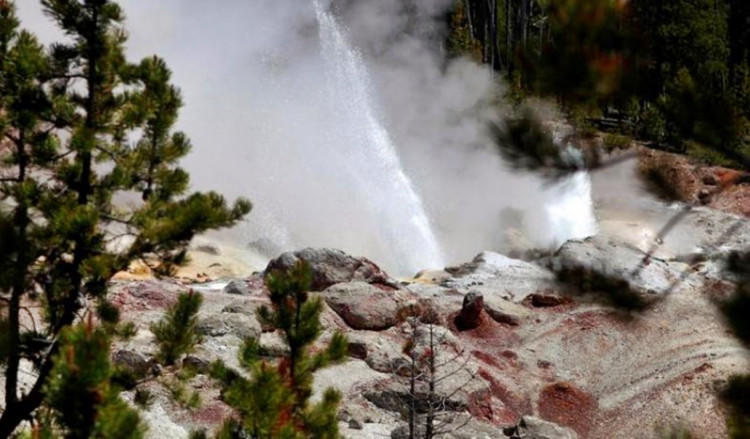The reawakening in 2018 of the Steamboat Geyser at Yellowstone National Park is showing signs of an eruption.
While geologists dismiss the imminence of a major eruption the unusual current activity exhibited by the Steamboat Geyser is worrisome, they say.
Yellowstone is the largest volcanic field in North America and is home to the "Yellowstone supervolcano." It is mostly in Wyoming but extends into Idaho and Montana.
Yellowstone's three volcanic eruptions occurred 2 million, 1.3 million and 600,000 years ago. Previous eruptions of the supervolcano probably lasted many months - and perhaps even years, the experts say.
Steamboat Geyser is the world's tallest active geyser - shooting upward of 120 meters.
The renewed eruption of the geyser in 2018 after laying dormant for three-and-a-half years sparked speculation about a reawakening of the supervolcano. Signs of a potential eruption included the ground around the geyser rising. There were also increases in seismic activity.
The area around the geyser is currently radiating slightly more. Yellowstone's geyser fields, including Steamboat, are located just outside the volcanic caldera.
A new study by geologists published in the "Proceedings of the National Academy of Sciences" says geyser activity isn't directly linked to underground magma movement that is a necessary prerequisite to an eruption.
The study found that no other dormant geysers in the basin had restarted, according to Michael Manga, professor of earth and planetary sciences at the University of California, Berkeley, and the study's senior author.
It also reported the temperature of the groundwater has remained stable.
The study said the geyser's activity was more likely linked to the morphology of its underground systems and precipitation in Yellowstone.
Long-term activity is likely controlled by the rising or falling of the groundwater table and drought periods.






